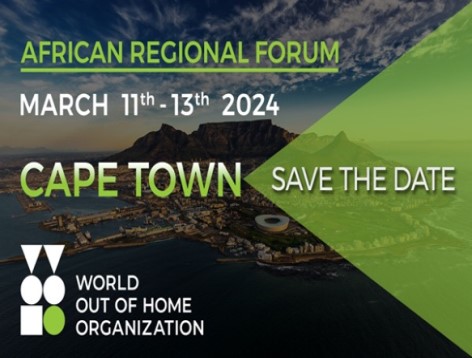Article

The Rise of Faux OOH (CGI in Out-of-Home Advertising): Blurring Realities and Consumer Perception
Out-of-Home (OOH) advertising has long been a powerful medium to capture attention and convey brand messages. However, the integration of Computer-Generated Imagery (CGI) into OOH campaigns has recently sparked a revolution known as FAKE OOH or Faux OOH (FOOH), transforming static billboards, Digital Screens and posters into dynamic, immersive experiences. This evolution has opened new horizons for brand storytelling and engagement, particularly when combined with mobile integration.
CGI has been utilized for manipulating images in OOH executions for some time. However, this year witnessed a surge in the use of CGI manipulations within videos showcasing OOH campaigns. These videos, featuring remarkable executions such as the Spiderman hanging truck, or the vividly striking peacock cinema ads, Tube Train with giant eyelashes, handbag cars for Jacquemus at Paris Fashion Week and so many others have set a new standard for creativity and viral potential in the digital space.

The infusion of CGI, VFX and 3D Animations into OOH campaigns has introduced a heightened sense of reality, breathing life into brand messaging. These visually captivating and seemingly realistic executions have garnered significant social sharing and discussions, amplifying brand awareness and generating buzz.
Yet, as the boundaries between reality and virtuality blur, questions arise regarding consumer perceptions. When viewers discover that what they saw was CGI and not real, how does it affect their perception of the brand? Will it lead to disillusionment and a negative impact on brand credibility, or will the hype surrounding these innovative campaigns overshadow any concerns about false messaging?
The potential for consumer reactions to CGI-based OOH campaigns is multi-faceted. Some consumers might feel fascinated by the artistry and creativity involved, appreciating the immersive experience provided by these campaigns. However, others might express disappointment or skepticism upon realizing that the spectacular visuals were digitally created rather than authentic.
Navigating this territory requires a delicate balance between creativity and transparency. According to Mel Arrow in her article titled Fake OOH ads have the power to amaze but we must proceed with caution, she reminded us that “…The established rules of advertising pivot on truthfulness. And it’s important for our industry to stay on the right side of consumer trust. The world is full of fake news, an economy-smashing referendum was won on advertising lies, and our profession ranks just above politics in terms of trust. And while in the case of fake out-of-home, it’s the medium not the message that’s the deception, I still think we need to tread carefully.”
From the foregoing, Brands must consider how the use of CGI aligns with their messaging and brand ethos while ensuring transparency and honesty in their communication with consumers. Striking this balance can not only preserve brand credibility but also enhance it by showcasing the brand’s innovative and artistic approach to storytelling.

As we move forward, the question lingers: Will we see a further surge in CGI integration within OOH campaigns? The allure of captivating visual experiences and the potential for increased brand exposure might lead to continued experimentation and adoption of CGI in OOH advertising.
Ultimately, the impact of CGI in OOH rests on how brands navigate the fine line between captivating storytelling and transparent communication. When wielded thoughtfully, CGI has the power to revolutionize OOH advertising, creating immersive and engaging experiences that resonate deeply with audiences while maintaining brand trust and authenticity.
For more info, see link below.

The Dynamic Duo: Digital Out of Home Advertising Enhances Static OOH

Africa to Experience WOO’s First In-Person Africa Forum in Cape Town, SA come March 11-13, 2024

The Success Pillars of OOH Campaigns

5 Points to Note in Strategic OOH Media Buying